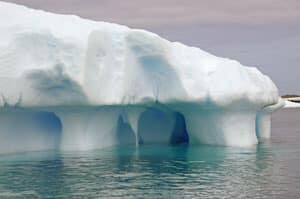 Today Envirosafe Solutions looks at some rather strange creatures and events from Antarctica.
Today Envirosafe Solutions looks at some rather strange creatures and events from Antarctica.
There is a new environmental disaster in the making in Antarctica. A new chilling horror never seen before has risen from the deep Antarctic abyss. Unbelievably, giant crabs looking more like spiders, and one metre in diameter have been rising from the Antarctic abyss. So far, there are no reports of anyone having eaten any of these giant crabs so we do not know if they taste anything like their regular ocean counterparts.
However, the crabs themselves have caused large-scale environmental devastation. It seems these giant crabs have begun to impact life from the Antarctic abyss and are on the verge of destroying the entire underwater ecosystem surrounding the Antarctic abyss. The Antarctic abyss is an ecosystem that is 14 million years old. Should it be wiped out (as some are surmising may happen in years to come), a huge wealth of knowledge would be lost.1
However, environmental scientists and oceanographers are not surprised. It seems they were forewarned of this event. In 2008-09, environmental scientists and oceanographers pointed out that if oceans heat too much then warm currents would be carried all the way to the bottom of the Antarctic abyss. Here, with plenty to feed on and no natural predators, species like the Deep Ocean crabs would just keep growing until they become giants with the potential to destroy the entire ocean floor ecosystem. And this part of the prediction may be on the way to coming true. 2
Environmental scientists and oceanographers have further considered the possibility that once these giant crabs have devoured all life forms at the ocean bottom, they will eat their way upwards and finally move on to the land. Sound like science fiction? Perhaps not.
Within a short span of hundred years, the entire Antarctic region would be covered with giant crabs. The giant crabs would eat everything in its path leaving nothing – not even the nesting birds or the penguins. The damage caused to the entire fragile Antarctic environment would be incalculable. 3
Deep ocean remotely operated submersibles have shot video footage of the vast devastation happening on the Antarctic Ocean floor. The crabs use their long pincers and second legs to prod and poke at every hole and fissure looking for food. While doing so, they puncture and destroy delicate plant and animal habitats. An environmental ecosystem that took 14 million years to evolve is being laid waste. When the ocean sediment is stirred in such a destructive manner, the ocean floor organic matter is devastated and the entire delicate ecological and environmental balance is destroyed.
The hungry giant crabs have been scavenging and eating everything within their path so much so that even sea lilies, sea urchins, sea cucumbers, brittle starts and starfish have not been spared. All these species have vanished from the Antarctic abyss.4
Until 1982, the temperature in the Antarctic abyss was 1.20°C. This was too cold for deep ocean crabs. By 2010, the temperature had risen by 0.27°C. The new temperature is acceptable for deep ocean crabs. Scientists worry that if deep ocean crabs can invade and destroy environmentally sensitive regions such as the Antarctic abyss, then they can wreak a similar destruction across the entire world’s ocean floor and all this thanks to human environmental pollution; the ocean floor has now become a warmer place to live.
Envirosafe Solutions cares about the environment. Telephone 1300 889070.
Footnotes and references:
1. Giant crabs in Antarctic abyss: http://www.newscientist.com/article/dn20876-giant-red-crabs-invade-the-antarctic-abyss.html
2. Ocean floor is warming: http://www.sciencedaily.com/releases/2004/01/040113080810.htm
3. Antarctic abyss and the giant crabs: http://www.huffingtonpost.com/2011/09/12/giant-red-crab-invasion-climate-change_n_956090.html
4. Antarctic Ocean Floor ecosystem : http://www.divediscover.whoi.edu/ecosystem/ecosystem.html




















